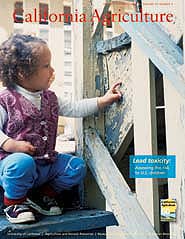All Issues

Lead toxicity: Assessing the risk to U.S. children
Cover:
National studies have increasingly linked even low levels of lead exposure to IQ deficiencies and behavioral disorders in young children (page 180). In September, a new study connected attention deficit disorders to lead, among other factors (see www.ephonline.org).
October-December 2006
Volume 60, Number 4
Volume 60, Number 4





